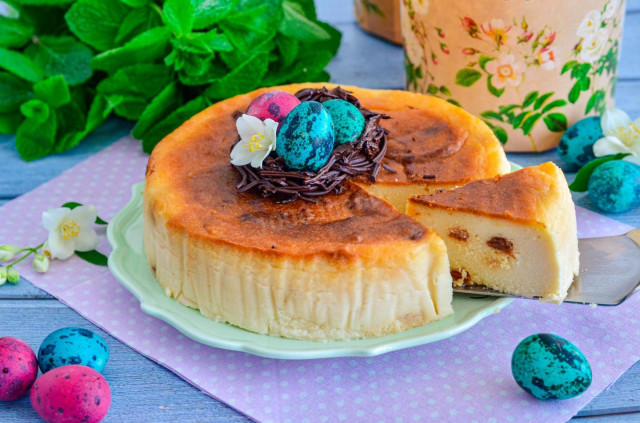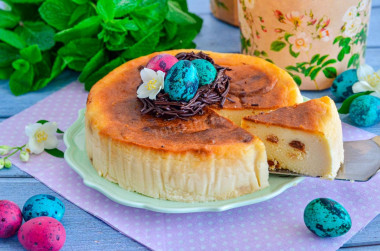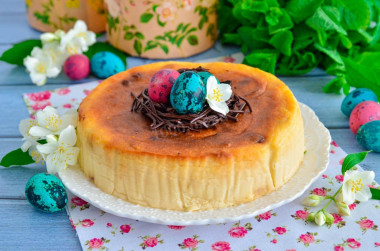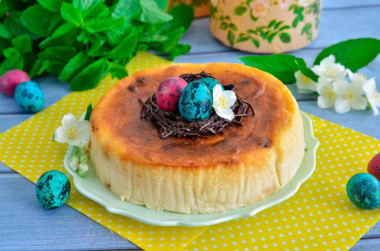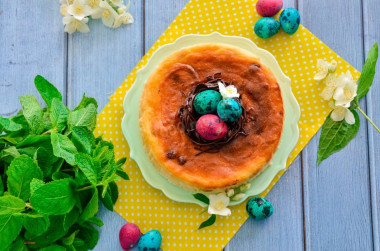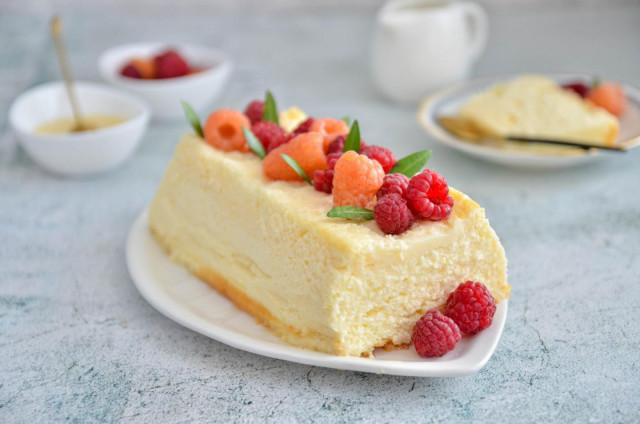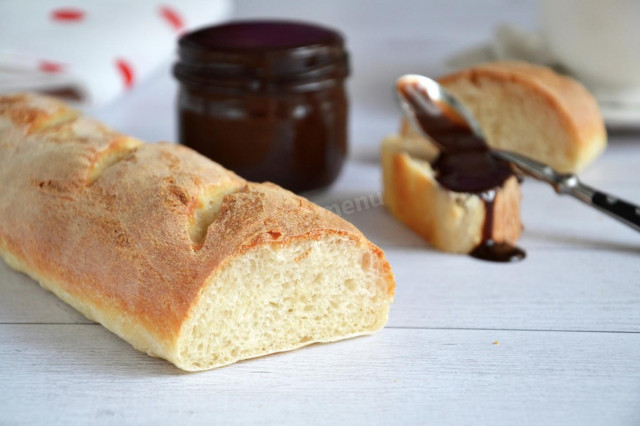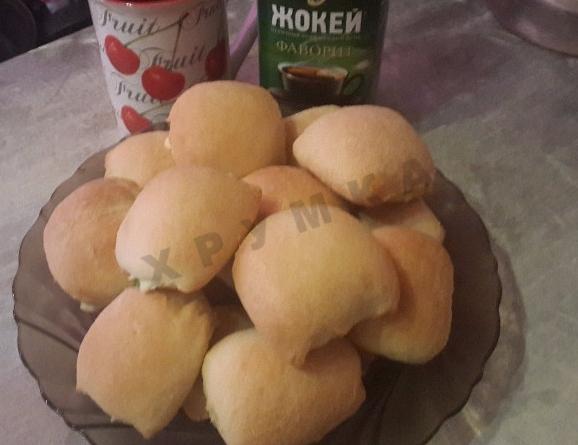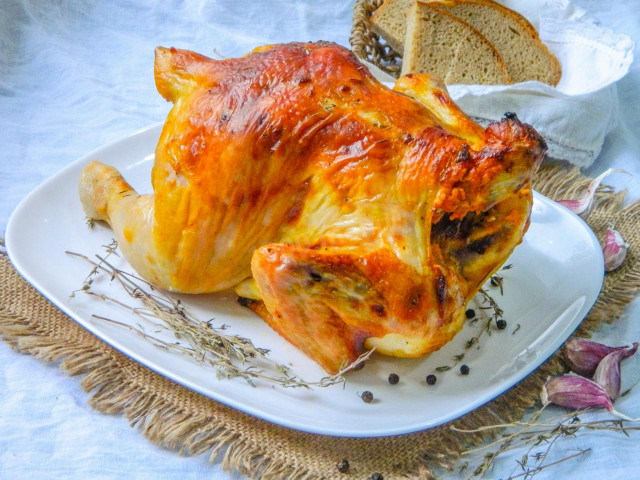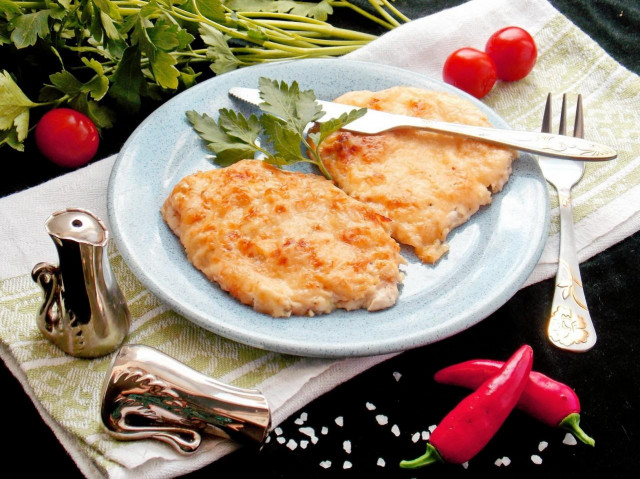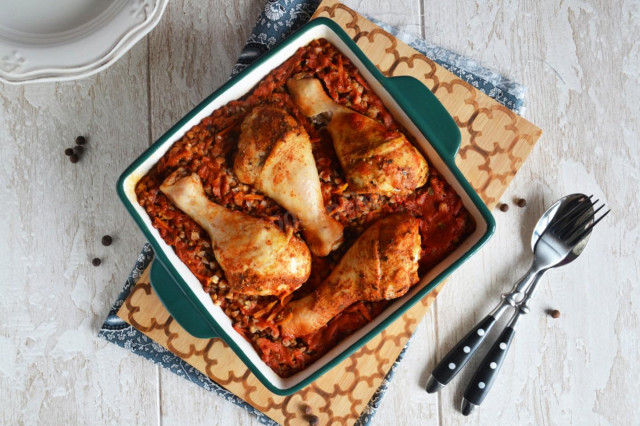Composition / ingredients
Step-by-step cooking
Step 1:
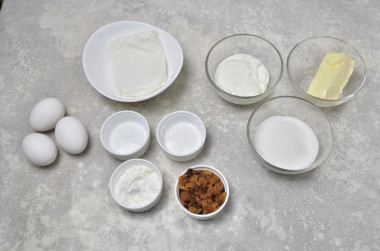
How to bake cottage cheese Easter in the oven? Prepare the products. All dairy ingredients should be fatty, cottage cheese at least 9%, sour cream — 20%. It is with such ingredients that Easter will be tastier. Choose high—quality and natural cottage cheese, sour cream and butter - the result will depend on their quality. Remove all the products from the refrigerator in advance so that they become warm and the butter is soft.
Step 2:
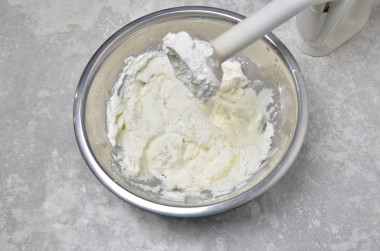
Put cottage cheese, sour cream, soft butter and corn starch in a deep bowl. Whisk it all with an immersion blender. The mass should become completely homogeneous and smooth. This is one of the main secrets of a delicious Easter. If you don't have a blender, then rub the cottage cheese through a sieve.
Step 3:
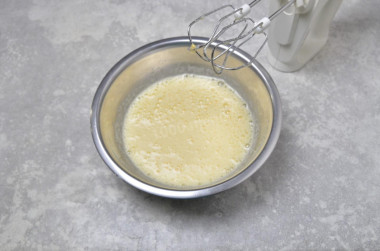
In another bowl, beat the eggs. Be sure to wash the eggs before use, as even the seemingly clean shell may contain harmful bacteria. It is best to use food detergents and a brush. Start whipping them at low mixer speeds. Add sugar in portions, beating the mass well after each addition. Also add vanilla and salt, which will balance and enhance the taste. Beat eggs with sugar until fluffy light mass.
Step 4:
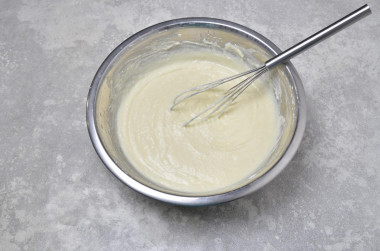
Combine the curd and egg masses. To keep them airy, mix with careful movements from the bottom up. Add the beaten eggs also in portions, kneading after each. The finished mass for Easter should be smooth and completely homogeneous.
Step 5:
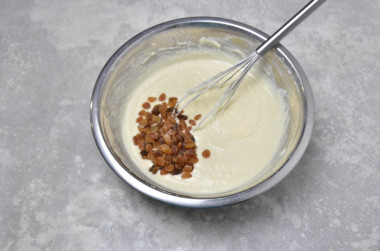
Wash the raisins well and dry them with paper towels. Pour it on Easter. You can also add dried apricots, candied fruits, chocolate drops or nuts. Mix the curd mass with the raisins.
Step 6:
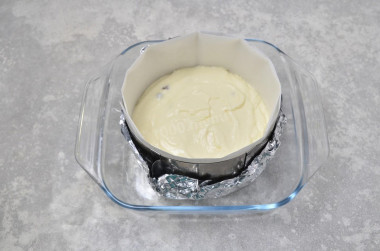
Prepare the baking dish. For a given number of products, it is better to take a small diameter shape, 16-18cm. I have a sliding ring, 17cm. Line the inside of the mold with parchment. And wrap it outside with several layers of foil — Easter will be baked in water. Pour the curd mass into the prepared mold, level the top.
Step 7:
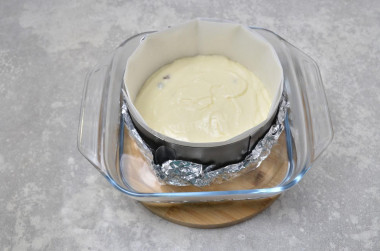
Place the mold in a deep baking tray (I took a glass baking dish). Pour boiling water into it so that it reaches the middle of the mold.
Step 8:
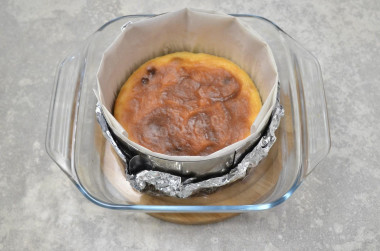
Preheat the oven to 160 ° C, top-bottom mode, without convection. Place the baking sheet in the oven and bake it for 1.5-2 hours. The exact time will depend on the characteristics of your oven. The top should turn red, and the skewer inserted in the center should come out dry. When this happens, turn off the oven and leave Easter in it for 4 hours. Then remove the baking sheet from the oven. Put the Easter mold in the refrigerator for at least 4 hours.
Step 9:
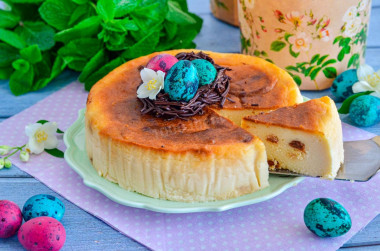
Release the finished chilled Easter from the mold and serve it to the table. Enjoy your meal!
I've been wanting to try this recipe for a long time, as I've always cooked a traditional dessert of raw cottage cheese for Easter. Baked Easter turned out to be very tasty, really similar to cheesecake, but with notes of raw Easter. We liked it!
Important! In order for the curd dough or filling to be successful, it is important to carefully consider the choice of cottage cheese. A low-quality product can spoil baking, as it directly affects the consistency, taste and final result. How to choose the right cottage cheese for dough or filling read in this article .
Keep in mind that everyone's ovens are different. The temperature and cooking time may differ from those specified in the recipe. To make any baked dish successful, use useful information about the features of ovens !
What is the difference between vanilla, vanillin, vanilla extract and vanilla sugar, how to use and replace them correctly, so as not to spoil the taste of the dish , read in this article .
Caloric content of the products possible in the composition of the dish
- Sour cream with 30% fat content - 340 kcal/100g
- Sour cream of 25% fat content - 284 kcal/100g
- Sour cream with 20% fat content - 210 kcal/100g
- Sour cream of 10 % fat content - 115 kcal/100g
- Sour cream - 210 kcal/100g
- Chicken egg - 157 kcal/100g
- Egg white - 45 kcal/100g
- Egg powder - 542 kcal/100g
- Egg yolk - 352 kcal/100g
- Ostrich egg - 118 kcal/100g
- Cottage cheese of 40% fat content - 466 kcal/100g
- Cottage cheese of 20% fat content - 233 kcal/100g
- Cottage cheese of 18% fat content - 226 kcal/100g
- Cottage cheese of 10% fat content - 156 kcal/100g
- Low-fat cottage cheese - 75 kcal/100g
- Cottage cheese with sour cream - 260 kcal/100g
- Fruit cottage cheese - 147 kcal/100g
- Soft dietary cottage cheese - 170 kcal/100g
- Cottage cheese "vitalinia" - 64 kcal/100g
- Cottage cheese "morning" ( "danone") without sugar - 91 kcal/100g
- Cottage cheese - 156 kcal/100g
- Granulated sugar - 398 kcal/100g
- Sugar - 398 kcal/100g
- Butter 82% - 734 kcal/100g
- Amateur unsalted butter - 709 kcal/100g
- Unsalted peasant butter - 661 kcal/100g
- Peasant salted butter - 652 kcal/100g
- Melted butter - 869 kcal/100g
- Raisins - 280 kcal/100g
- Kishmish - 279 kcal/100g
- Salt - 0 kcal/100g
- Vanillin - 288 kcal/100g
- Corn starch - 329 kcal/100g

